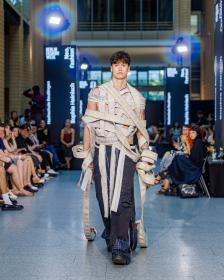HDE: Zurückhaltende Konsumlaune
Nachdem sich die Verbraucherstimmung in Deutschland zuletzt weiter aufgehellt hatte, legt der Aufwärtstrend im August eine Pause ein. Das geht aus dem aktuellen Konsumbarometer des Handelsverbandes Deutschland (HDE) hervor. Demnach bewegt sich der Index nahezu auf dem Niveau des Vormonats. Ob die Stagnation der Verbraucherstimmung der Beginn eines negativen Trends ist, bleibt abzuwarten und ist von den wirtschaftspolitischen Maßnahmen der Bundesregierung sowie von der Entwicklung der geopolitischen Rahmenbedingungen in den kommenden Monaten abhängig.
Die Konsumlaune der Verbraucherinnen und Verbraucher ist weiterhin von Zurückhaltung geprägt. Sie planen, sich in den nächsten Wochen verstärkt auf das Sparen zu konzentrieren, ihre Sparneigung steigt. Zwar geht auch die Anschaffungsneigung der Verbraucher nach oben, jedoch nur geringfügig. Sie liegt damit noch immer unter dem Vorjahresniveau. Vorsicht bestimmt weiterhin das Handeln der Verbraucherinnen und Verbraucher. Eine spürbare Erholung des privaten Konsums ist daher in nächster Zeit nicht zu erwarten.
Auch mit Blick auf die konjunkturelle Entwicklung in den kommenden Wochen sind die Verbraucher zurückhaltend. Ähnlich wie bei den Unternehmen fallen ihre Einschätzungen nur etwas positiver aus als im Vormonat. Eine erneute Rezession fürchten die Verbraucherinnen und Verbraucher somit nicht, doch ein signifikantes Wachstum halten sie offenbar auch für unwahrscheinlich. Deutlich optimistischer zeigen sich die Verbraucher hingegen, wenn es um die Entwicklung ihrer eigenen Einkommenssituation geht. Hier legen ihre Erwartungen zu, was an der grundsätzlich niedrigeren Inflation und den zuletzt gesunkenen Energiepreisen liegen könnte.
In den vergangenen Monaten hatte sich die Verbraucherstimmung stetig verbessert. Da ein gesamtwirtschaftlicher Aufschwung jedoch nicht in Sicht ist, gerät der Aufwärtstrend nun ins Stocken. Die Verbraucherinnen und Verbraucher agieren weiterhin mit Vorsicht und warten auf Impulse. An eine kurzfristige wirtschaftliche Erholung glauben sie nicht. Aufgrund der vorherrschenden Unsicherheit wird es in den kommenden Monaten voraussichtlich keinen Schub beim privaten Konsum geben.
Das jeweils am ersten Montag eines Monats erscheinende HDE-Konsumbarometer basiert auf einer monatlichen Umfrage unter 1.600 Personen zur Anschaffungsneigung, Sparneigung, finanziellen Situation und zu anderen konsumrelevanten Faktoren. Das Konsumbarometer, das vom Handelsblatt Research Institute (HRI) im Auftrag des HDE erstellt wird, hat eine Indikatorfunktion für den privaten Konsum. Es bildet nicht das aktuelle Verbraucherverhalten ab, sondern die erwartete Stimmung in den kommenden drei Monaten.
HDE Handelsverband Deutschland
































